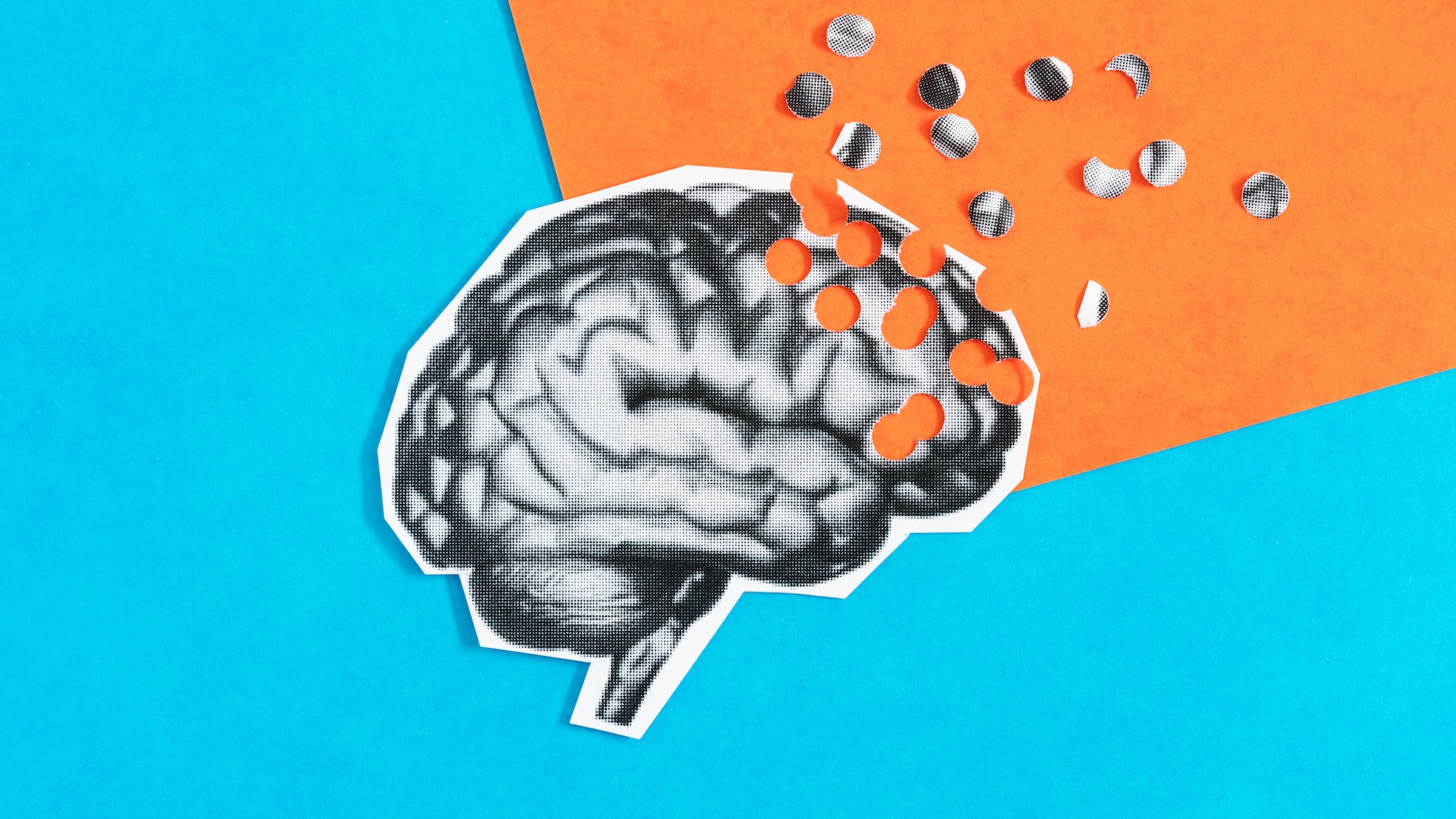
A man whose genetics almost guaranteed that he would develop Alzheimer's disease by his 50s has somehow made it to his mid-70s with nary a symptom.
The now-75-year-old man, Doug Whitney, is one of only three people known to have escaped their genetic fate, sidestepping a rare form of Alzheimer's disease called dominantly inherited Alzheimer's disease (DIAD). Caused by several gene mutations, DIAD makes up less than 1% of all Alzheimer's cases, and its symptoms typically set in between ages 35 and 55.
A new study, published Feb. 10 in the journal Nature Medicine, details Whitney's case and pinpoints potential factors that may have shielded him from the neurodegenerative disorder thus far. One hypothesis is that his exposure to very high heat as a shipboard mechanic could have somehow contributed to this resilience, co-lead author Dr. Jorge Llibre-Guerra, an assistant professor of neurology at the Washington University School of Medicine in St. Louis and co-first author of the study, told Live Science.
This report adds to the handful of cases that are "potentially, a critical source for understanding molecular mechanisms that can slow or stave off Alzheimer's disease pathogenesis," Dr. Michael Greicius, an Alzheimer's researcher at Stanford University who was not involved in the study, told Live Science in an email.
Related: A man's rare gene variant may have shielded him from devastating form of early Alzheimer's
A "shocking" surprise
Whitney told the research team that he thought he was one of the few who had escaped the mutations that had caused so much DIAD in his family. At age 61 — when Whitney first approached the researchers about enrolling in a large trial about DIAD — he showed no signs of Alzheimer's disease, whereas his mother and 11 of her 13 siblings had developed the condition by the time they were in their 50s.
DIAD is caused by mutations in three genes: amyloid precursor protein (APP), presenilin-1 (PSEN1) or presenilin-2 (PSEN2). The overwhelming majority of people with DIAD only carry one of these mutations, although Llibre-Guerra said he's come across a few who carried more than one.
"Once you inherit some of these mutations, you have like a 99.99% chance of developing the disease," Llibre-Guerra said. That's why Whitney was "shocked" to discover that he carried a mutation in the PSEN2 gene that should have led to early-onset Alzheimer's, he added.
Now, at 75, Whitney still hasn't developed symptoms of the condition, which makes him one of three people known to have escaped near-certain DIAD, per the study.
To understand Whitney's apparent protection, Llibre and his colleagues used brain scans to look for the telltale signs of Alzheimer's — namely, abnormal protein clumps called amyloid-beta plaques and tau protein tangles.
The accumulation of amyloid-beta plaques is an early step in the development of Alzheimer's disease, followed by an accumulation of "tangles" of tau protein. Evidence suggests the interplay between these two proteins is potentially what leads to cognitive decline, although these may not be the only factors at play.
Whitney's brain turned out to be flooded with amyloid, but unlike in other DIAD patients, the tau had stayed contained within a small section of the brain. These tangles were at the back of his skull, in his left occipital lobe.
This pattern adds weight to the idea that "if we prevent the downstream effects of amyloid-beta, we might delay the onset of the disease," Llibre-Guerra said. In other words, it seems like the chain reaction between amyloid and tau was somehow broken in Whitney's brain. "The question that we have is, what is preventing tau spread in this particular case?" he added.
This observation echoes what had previously been seen in another DIAD "escapee" who also had a mutation in the PSEN1 gene, Jean-Charles Lambert, an Alzheimer's researcher from the Inserm Institute at the University of Lille who was not involved in the study, told Live Science in an email.
Could extreme heat have been protective?
A few gene variants are known to protect against Alzheimer's. One example is the so-called E2 allele of the APOE gene, which is associated with a very low risk of developing the disease, Lambert said.
But the team did not find any of these known variants in Whitney's genetic makeup. Instead, they pinpointed several other variants that could be interesting to study in the context of Alzheimer's. These include one variant spotted in GPCPD1, a gene recently linked to Alzheimer's resilience. Another variant, found in the CD33 gene, could warrant further research, Llibre-Guerra said, as it's involved in immune responses in the brain.
The scientists also found higher-than-normal levels of "heat-shock proteins" in Whitney's cerebral spinal fluid, the liquid that cushions the brain and spinal cord. Heat-shock proteins help protect the body from environmental stresses, such as extreme heat, and could be linked to Whitney's time working as a shipboard mechanic in boiling engine rooms, the team suggested.
"We know that these proteins are involved in preventing misfolding proteins in the brain," Llibre-Guerra said. Like origami, proteins must be folded in a particular way to work, and Alzheimer's is a disease in which this folding goes awry. "Maybe it's preventing more tau from being misfolded and spreading," Llibre-Guerra suggested, adding that this is "just a hypothesis" at this stage.
For Lambert, this explanation is "highly speculative," as the evidence to support it is still very tentative. Greicius added that there are "countless other possible explanations" for Whitney's resilience against Alzheimer's, although this is an "interesting and plausible hypothesis."
The team's genetic investigation was a "reasonable first analysis," but it could have left "thousands of potentially protective variants unexamined on the cutting-room floor," Greicius added. And because this was a case study of only one person, it's challenging to identify a genetic variant or environmental exposure that may have helped him, he said.
Still, Greicius said, studies like this one are "useful for generating novel hypotheses."







